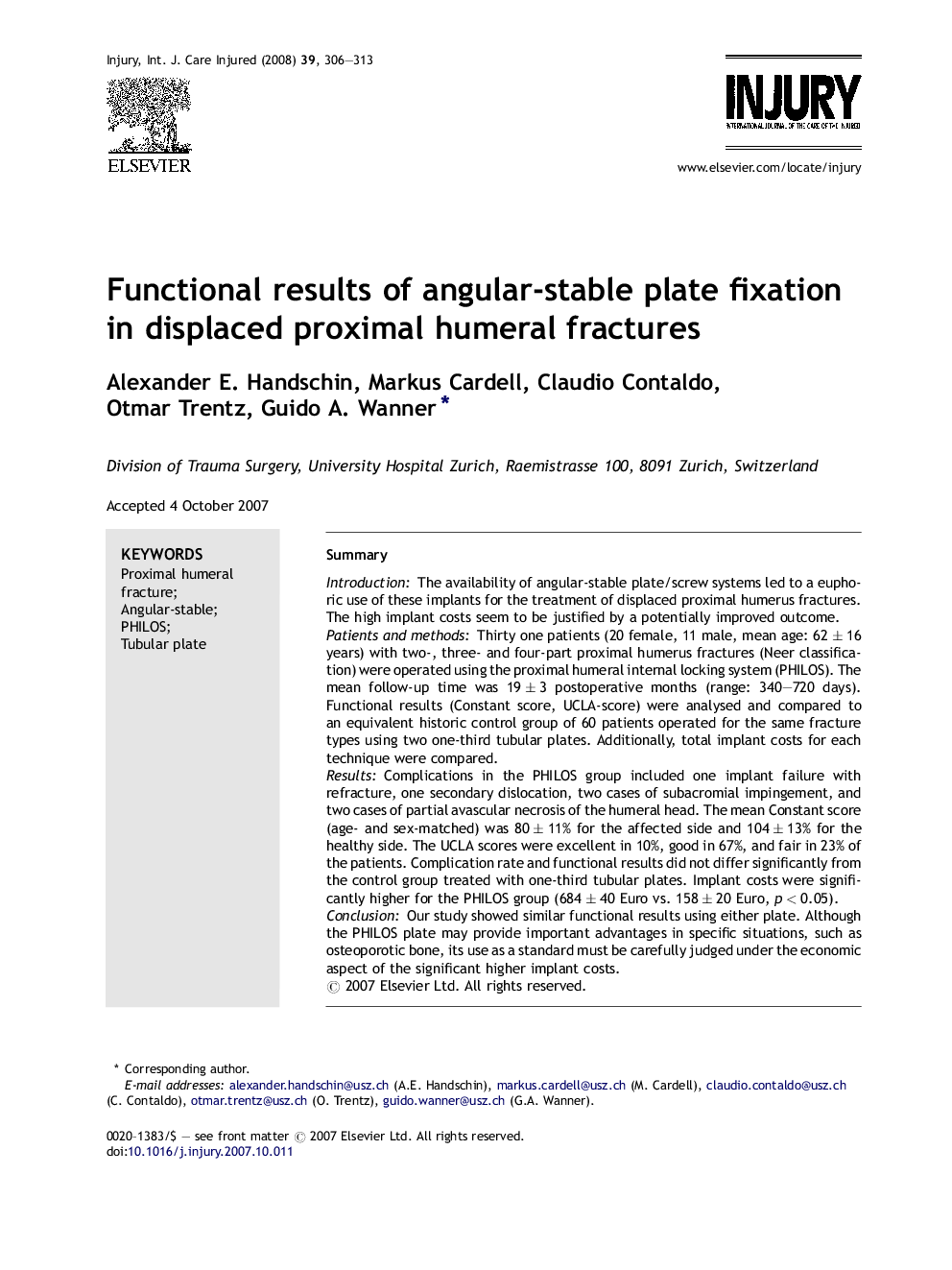| Article ID | Journal | Published Year | Pages | File Type |
|---|---|---|---|---|
| 3242879 | Injury | 2008 | 8 Pages |
SummaryIntroductionThe availability of angular-stable plate/screw systems led to a euphoric use of these implants for the treatment of displaced proximal humerus fractures. The high implant costs seem to be justified by a potentially improved outcome.Patients and methodsThirty one patients (20 female, 11 male, mean age: 62 ± 16 years) with two-, three- and four-part proximal humerus fractures (Neer classification) were operated using the proximal humeral internal locking system (PHILOS). The mean follow-up time was 19 ± 3 postoperative months (range: 340–720 days). Functional results (Constant score, UCLA-score) were analysed and compared to an equivalent historic control group of 60 patients operated for the same fracture types using two one-third tubular plates. Additionally, total implant costs for each technique were compared.ResultsComplications in the PHILOS group included one implant failure with refracture, one secondary dislocation, two cases of subacromial impingement, and two cases of partial avascular necrosis of the humeral head. The mean Constant score (age- and sex-matched) was 80 ± 11% for the affected side and 104 ± 13% for the healthy side. The UCLA scores were excellent in 10%, good in 67%, and fair in 23% of the patients. Complication rate and functional results did not differ significantly from the control group treated with one-third tubular plates. Implant costs were significantly higher for the PHILOS group (684 ± 40 Euro vs. 158 ± 20 Euro, p < 0.05).ConclusionOur study showed similar functional results using either plate. Although the PHILOS plate may provide important advantages in specific situations, such as osteoporotic bone, its use as a standard must be carefully judged under the economic aspect of the significant higher implant costs.
